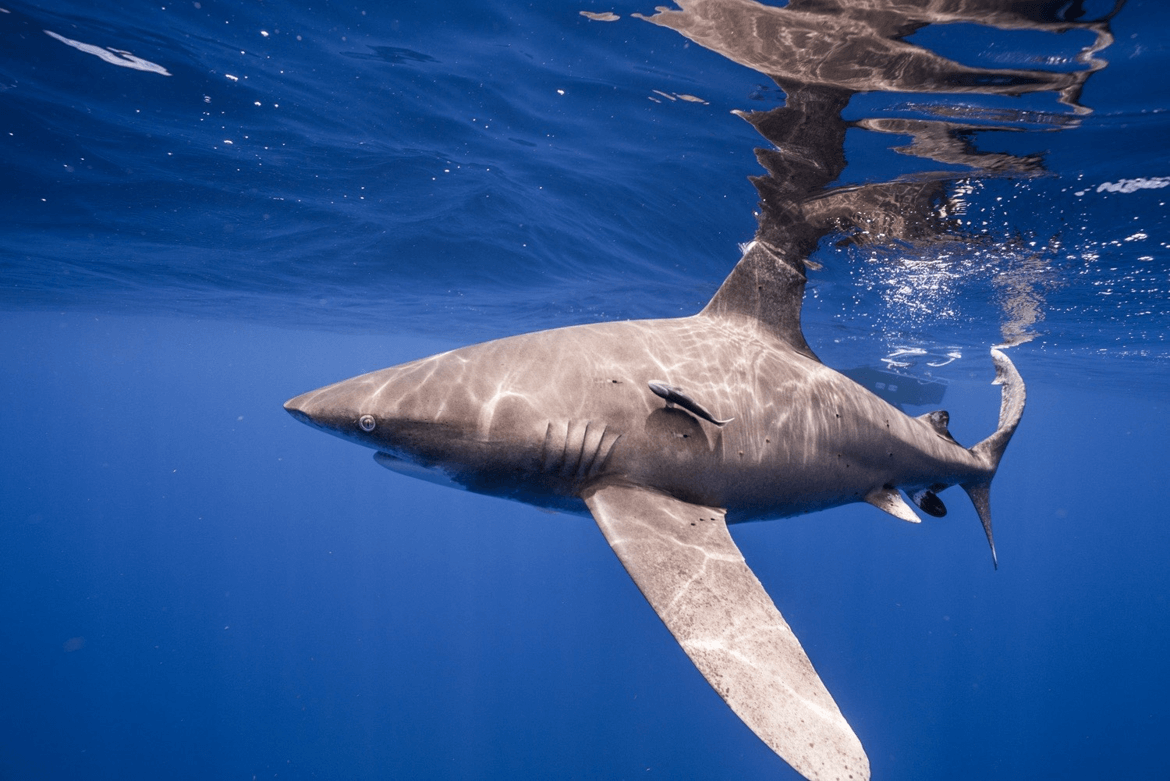Study says: no sharks, no future!
As published April 19, 2021 by the Mongabay nature news site, a world without sharks is a real threat and much closer to reality than we think, says Nathan Pacoureau, postdoctoral researcher at the Earth to Ocean Research Group from Simon Fraser University in Canada. Pacoureau and an international research team recently detected a 70% decline in shark and ray populations in the past 50 years. This study, published in Nature, underscores the need for international monitoring of shark and ray conservation policy, experts say.
Despite the great cinema media still treating sharks as great man-eating villains, they and their cousin rays are very important for the balance of the oceans and coasts, keeping the food chain and the web of life in the waters healthy. The loss of these species that are top-of-the-range predators, threatens the entire sustainability of the oceans, according to the researchers.
- Like many other taxonomic groups, shark and stingray declines are caused by human actions - in this case, overfishing by commercial fishing.
- Experts call for a ban on retention by the EU to prevent the collapse of threatened shark populations.
But unfortunately, population decline and risk of extinction are not exclusive to sharks and rays. Insect populations are declining at a rate of 1 to 2% per year (remember when you traveled by car and the window was left with several dead insects on the glass? Today no more!). Approximately 75% of the world’s primate species are falling precipitously. Amphibians also face threats to their populations.
Many scientists say these losses could be a symptom of a bigger problem: a disconnect between our recognition of the decline in global biodiversity and our willingness to take the necessary steps to prevent it.
Overfishing leads to shark decline and increases the risk of extinction.
Concrete data on marine species of the high seas is not easy and to calculate these populations several methodologies are adopted in different lines of research.
Pacoureau in his studies managed to model trends in the relative population of 18 species. They also compiled records of fisheries, availability of species in the fish markets. The conclusion is not new: Overfishing is largely responsible for the reduction of shark and ray populations in the last half of the century.

Many coastal towns have been fishing for sharks for hundreds, if not thousands of years, originally looking for their meat and liver oil. More recently, the shark fin and ray gill market appeared, creating a huge trafficking market, as this trade is banned in most parts of the world.
Over the years and technology development, commercial fishing has also benefited from heavier and more effective techniques, making industrial fishing boats even more deadly and destructive to the oceans, tremendously increasing pressure on ocean species.
The smaller the populations of sharks and rays become due to overfishing, the more and more technology is applied to fishing, making the extinction of these species as a logical mathematical conclusion. In the last 50 years alone, the number of boats, nets and other fishing gear has more than doubled.
Today shark and ray fishing rates, both as target species and by-catch are totally unsustainable.
The study shows that fishing leads to the decline of the largest and slowest breeding species first, reaching the smallest species later. And this at a much greater speed of fishing than the possible reproduction of these animals. And when they become extinct, fishermen will simply look for another, less valued target to continue fishing.
“These sharp drops [of sharks and rays] are shocking even for experts, especially when compared to land animal statistics,” said Pacoureau. “Three-quarters of these iconic species now qualify as endangered by the [IUCN Red List].”
In 2010, the UN declared the next 10 years to be the Decade of Biodiversity, where participating countries pledged to reduce the loss of biodiversity in their territories to a halt and protect ecosystems by 2020. The Aichi Goals were created and approved by the Convention of Biological Diversity, Cop CBD, in which Divers for Sharks has been actively participating. However, at the end of the thematic decade, the UN itself announced that none of the Aichi targets has been fully achieved.
“International goals and objectives require signatories to fulfill their commitments – whether in mitigating climate change or conserving biodiversity,” said Derek Tittensor, associate professor of biology at Dalhousie University in Canada, who was not involved in the shark study. “Without nations stepping up and delivering the necessary actions and policies to move towards sustainability, this will not happen.”

And what about the sharks?
One of the most serious and worst failures in the pursuit of the Aichi targets is precisely the drop of more than 70% in the populations of sharks and rays. These goals were not achieved until 2020 or even today. “These species are now in a precarious position. But giving up saving them would be the biggest mistake of all. It is important to note that many beneficial safeguards are already required through global wildlife treaties. A relatively simple initial step is countries members to fulfill these commitments through national regulations.” says Pacoureau
As always, there is no point in simply creating international agreements, goals and regulations, if the attitude of the countries participating in the Cops does not change and they start to develop a strong political will to fulfill these goals and agreements.
“For example, the mako shark (Isurus oxyrinchus) may be one of the most studied and therefore best understood shark species. But this attention has not led to their protection. Based on current trends in the mako population, the status of conservation of the species has been elevated to endangered species on the IUCN Red List in 2019, form of the previous low-risk category of vulnerable At the same time, the EU refuses to set satisfactory limits on mako consumption,” writes Sonja Fordham, president of Shark Advocates International and co-author of the study, in a note to the Shark League.
In July 2021, the International Commission for the Conservation of Atlantic Tuna (ICCAT) will vote to ban mako retention, which, according to Fordham, has the potential to change the future of this overexploited and endangered sharks.
The path to effective political change can seem daunting. But both Pacoureau and Fordham note that significant steps can start at the individual level.
“By expressing concern, through letters to lawmakers and news editors, as well as to social media and art, or as a tourist, everyone can help. The public’s sustained vocal support for shark conservation is not only truly significant; it is essential to create a better future for these extraordinary animals. ” Says Fordham
Quote:
Pacoureau, N., Rigby, C. L., Kyne, P. M., Sherley, R. B., Winker, H., Carlson, J. K., … Dulvy, N. K. (2021). Half a century of global shark decline and ocean rays. Nature, 589 (7843), 567-571. doi: 10.1038 / s41586-020-03173-9.
Banner image of a critically endangered white tip shark (Carcharhinus longimanus), courtesy of Andy Mann and Trevor Bacon.



